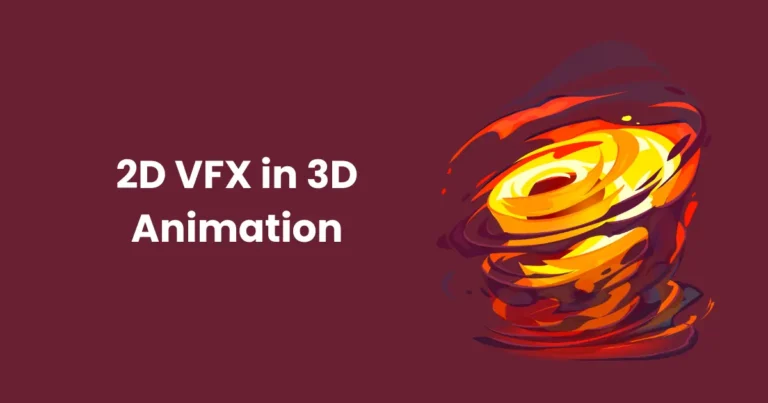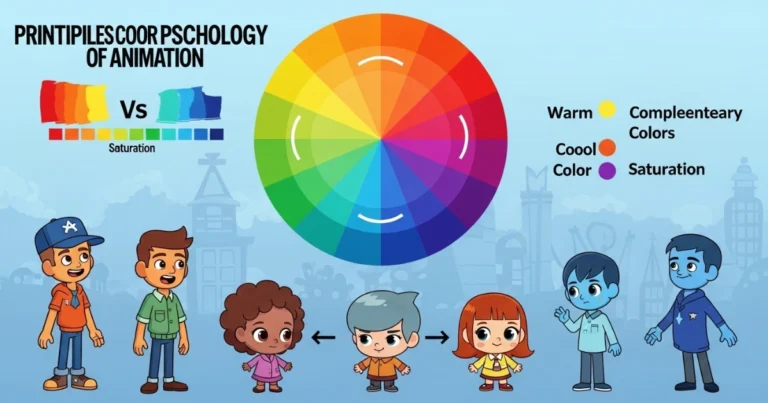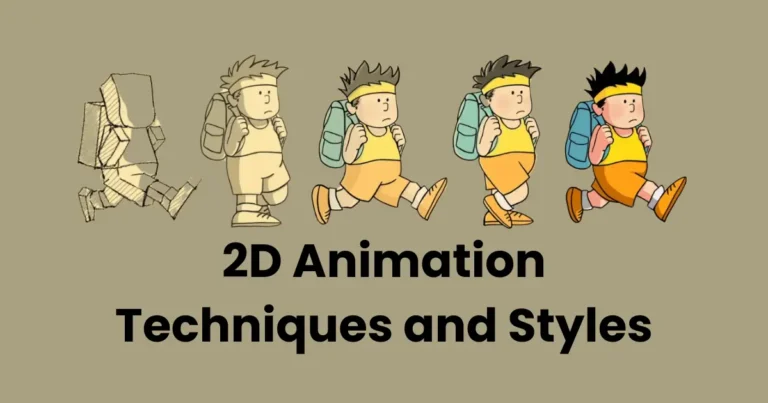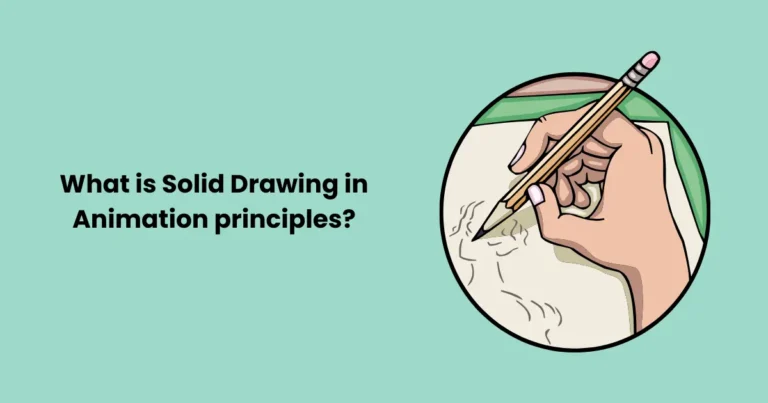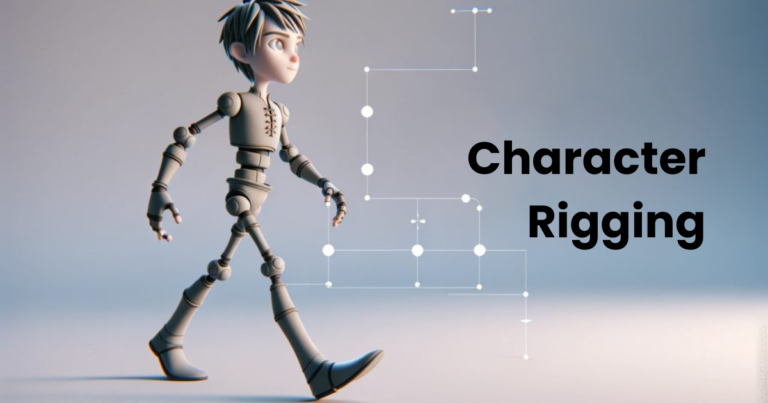Popular animation books | Animation Books Every Animator Should Read in 2025
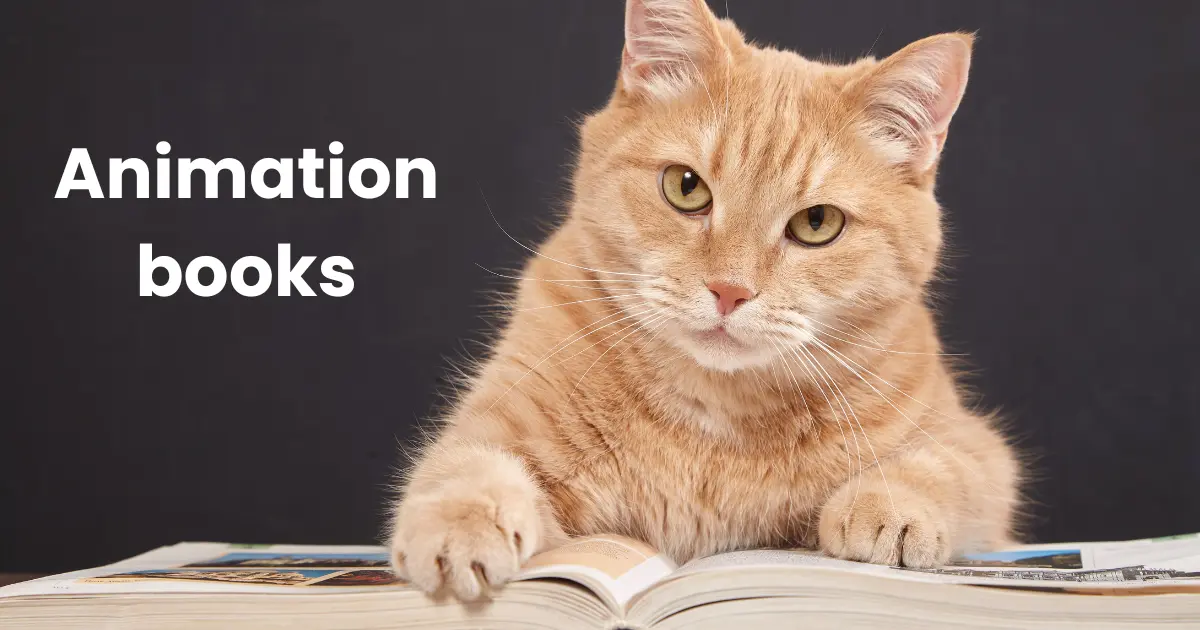
Contents
- 1 What Makes a Good Animation Book?
- 2 Best Animation Books for Beginners
- 2.0.1 1. “The Animator’s Survival Kit” by Richard Williams
- 2.0.2 2. “Cartoon Animation” by Preston Blair
- 2.0.3 3. “Animation for Beginners” by Morr Meroz
- 2.0.4 4. “Drawn to Life: 20 Golden Years of Disney Master Classes” by Walt Stanchfield
- 2.0.5 5. “Making Things Move: DIY Mechanisms for Inventors, Hobbyists, and Artists” by Dustyn Roberts
- 3 Animation Books for Intermediate and Advanced Artists
- 4 Books Covering Animation History and Theory
- 4.0.1 1. “The Illusion of Life: Disney Animation” by Frank Thomas and Ollie Johnston
- 4.0.2 2. “Cartoons: One Hundred Years of Cinema Animation” by Giannalberto Bendazzi
- 4.0.3 3. “Of Mice and Magic: A History of American Animated Cartoons” by Leonard Maltin
- 4.0.4 4. “Setting the Scene: The Art & Evolution of Animation Layout” by Fraser MacLean
- 4.0.5 5. “Animation: The Global History” by Maureen Furniss
- 5 Books on Digital Animation
- 5.0.1 1. “The Art of 3D Computer Animation and Effects” by Isaac V. Kerlow
- 5.0.2 2. “Blender for Dummies” by Jason van Gumster
- 5.0.3 3. “Digital Animation: Essential Skills” by Andrew Chong
- 5.0.4 4. “Maya Visual Effects: The Innovator’s Guide” by Eric Keller
- 5.0.5 5. “After Effects Apprentice” by Trish and Chris Meyer
- 6 animation books for Storyboarding and Concept Development
- 6.0.1 1. “Framed Ink: Drawing and Composition for Visual Storytellers” by Marcos Mateu-Mestre
- 6.0.2 2. “Storyboarding Essentials” by David Harland Rousseau and Benjamin Reid Phillips
- 6.0.3 3. “Directing the Story: Professional Storytelling and Storyboarding Techniques” by Francis Glebas
- 6.0.4 4. “The Storyboard Artist: A Guide to Freelancing in Film, TV, and Advertising” by Giuseppe Cristiano
- 6.0.5 5. “Story: Substance, Structure, Style, and the Principles of Screenwriting” by Robert McKee
- 7 Learning Animation through Illustrated and Graphic Books
- 7.0.1 1. “Animation 1: Learn to Animate Cartoons Step by Step” by Preston Blair
- 7.0.2 2. “The Animator’s Sketchbook” by Tony White
- 7.0.3 3. “How to Animate Film Cartoons” by Preston Blair
- 7.0.4 4. “Animation Lab for Kids” by Laura Bellmont and Emily Brink
- 7.0.5 5. “Drawn to Life: 20 Golden Years of Disney Master Classes” by Walt Stanchfield
- 8 How to Choose the Right Animation Book for Your Goals
- 9 Top Tips for Learning Animation from Books
Animation is a dynamic blend of creativity, technology, and storytelling. For aspiring animators and seasoned professionals alike, mastering this art form requires continuous learning and inspiration. While online tutorials and courses offer valuable insights, animation books provide a unique depth and perspective that other resources often lack.
Books allow creators to dive into the history, techniques, and philosophies behind some of the most iconic animations. They offer timeless principles and rich details that can’t always be covered in short-form content. Whether you’re just starting out or looking to refine your skills, animation books serve as a treasure trove of knowledge, guiding you through the nuances of this craft.
From foundational techniques to advanced theories, these resources cater to animators of all levels. Beyond technical expertise, animation books also inspire, revealing the creative processes of industry legends and sparking new ideas for your projects.
In this article, we’ll explore some of the best animation books for every stage of your journey, helping you build a library that supports your artistic growth. Whether your focus is hand-drawn animation, 3D modeling, or storytelling, there’s a book for you. Let’s get started!
What Makes a Good Animation Book?
Not all animation books are created equal. The best ones not only teach technical skills but also inspire creativity and help readers understand the storytelling and emotional depth that animation brings to life. Here are the key attributes that make an animation book truly exceptional:
1. In-depth Techniques
A good animation book delves into the foundational principles of animation, such as the “12 Principles of Animation,” timing, spacing, and character motion. It should break these concepts into clear, actionable steps, supported by examples and illustrations. Advanced books may also cover specialized topics like rigging, lighting, and visual effects for those looking to hone their expertise.
2. Inspirational Stories
Animation is as much about art as it is about the heart. Books that include behind-the-scenes insights or personal stories from industry veterans offer a rare glimpse into the passion and dedication behind iconic works. These narratives can motivate readers to persist in their own creative journeys.
3. Practical Exercises
Animation is a hands-on skill that thrives on practice. A great book provides exercises, challenges, and prompts that allow readers to apply the concepts they learn. From drawing motion sequences to designing character sheets, these activities ensure that knowledge is put into practice.
4. Visual Appeal
Given the artistic nature of animation, a good book must also excel in presentation. Clear diagrams, high-quality illustrations, and examples of finished animation frames enhance comprehension and keep readers engaged.
5. Relevance to Industry Trends
Animation techniques and tools evolve rapidly, especially with advancements in digital technology. Books that address modern software, workflows, or industry-specific challenges provide readers with the knowledge they need to stay competitive in today’s animation landscape.
Best Animation Books for Beginners
Starting your animation journey can be both exciting and overwhelming. With so much to learn, it’s essential to have the right resources to build a strong foundation. Here are some of the best animation books for beginners, covering core principles, techniques, and inspiration to kickstart your creativity:

1. “The Animator’s Survival Kit” by Richard Williams
Often hailed as the animation bible, this book is an indispensable resource for anyone entering the world of animation. Written by the acclaimed animator behind Who Framed Roger Rabbit, the book covers everything from basic principles like timing and spacing to advanced techniques like weight, balance, and acting. Packed with illustrations and practical advice, it’s an essential guide for learning the art and science of animation.
2. “Cartoon Animation” by Preston Blair
A classic in animation education, this book simplifies complex concepts into accessible lessons. It offers step-by-step instructions for creating characters, expressions, and movements. With its approachable tone and clear visuals, it’s perfect for beginners exploring the fundamentals of hand-drawn animation.
3. “Animation for Beginners” by Morr Meroz
This modern guide is tailored specifically for beginners looking to navigate today’s animation industry. It covers the basics of animation styles, tools, and software while providing practical advice for starting your first projects. The book balances foundational knowledge with insights into digital animation, making it a great entry point for aspiring animators.
4. “Drawn to Life: 20 Golden Years of Disney Master Classes” by Walt Stanchfield
This two-volume collection distills decades of wisdom from Walt Stanchfield, a legendary Disney animator. Though it dives deep into drawing and gesture, it’s also a treasure trove of lessons on storytelling, emotion, and character development. Beginners will find it inspiring as they learn how to bring characters to life on screen.
5. “Making Things Move: DIY Mechanisms for Inventors, Hobbyists, and Artists” by Dustyn Roberts
While not solely focused on animation, this book introduces readers to the mechanics of movement—a crucial aspect of animation. It’s especially helpful for beginners interested in stop-motion or mechanical animation, as it teaches the principles of motion in an engaging and practical way.
Animation Books for Intermediate and Advanced Artists
As animators progress in their careers, the challenges become more nuanced, requiring a deeper understanding of storytelling, motion, and technical mastery. For those ready to take their skills to the next level, these books provide valuable insights, advanced techniques, and industry expertise.
1. “Character Animation Crash Course!” by Eric Goldberg
Written by the legendary animator behind Disney classics like Aladdin, this book dives into advanced character animation techniques. Goldberg shares expert tips on personality, acting, and timing, making this a must-read for animators looking to bring more life and emotion to their characters.
2. “Directing the Story” by Francis Glebas
Aimed at animators and directors, this book explores the art of visual storytelling. Glebas, a Disney storyboard artist, teaches readers how to craft compelling narratives through composition, pacing, and camera work. It’s an excellent resource for those looking to elevate their storytelling skills in animation.
3. “Mastering Animation” by Richard E. Williams
This follow-up to The Animator’s Survival Kit is an advanced exploration of the intricacies of animation. Williams delves deeper into the craft, offering lessons on refining movement, tackling complex scenes, and understanding cinematic techniques. It’s perfect for animators aiming to fine-tune their artistry.
4. “Acting for Animators” by Ed Hooks
Animation is not just about motion—it’s about performance. This book bridges the gap between acting and animation, teaching animators how to convey emotions, intentions, and personality through characters. Hooks’ insights into body language and storytelling are invaluable for creating believable and engaging performances.
5. “The Illusion of Life: Disney Animation” by Frank Thomas and Ollie Johnston
Written by two of Disney’s “Nine Old Men,” this iconic book offers a comprehensive look at the history, philosophy, and principles of animation. It includes in-depth discussions on character development, storytelling, and the techniques that made Disney an animation powerhouse. While accessible to all, its detailed content makes it especially rewarding for experienced animators.
Books Covering Animation History and Theory
Understanding the history and theory of animation is essential for appreciating the art form’s evolution and the techniques that define it. These books delve into the cultural, artistic, and technological milestones of animation, offering valuable context and inspiration for animators and enthusiasts alike.

1. “The Illusion of Life: Disney Animation” by Frank Thomas and Ollie Johnston
This seminal book, written by two of Disney’s most iconic animators, is both a history and a guide to animation. It chronicles the golden age of Disney, detailing the development of the “12 Principles of Animation.” Packed with stunning visuals and behind-the-scenes anecdotes, this book is a cornerstone of animation literature.
2. “Cartoons: One Hundred Years of Cinema Animation” by Giannalberto Bendazzi
A comprehensive history of animation across the globe, this book explores the cultural and artistic diversity of the medium. Bendazzi examines animation’s evolution, highlighting influential creators and movements, from early experimental works to contemporary masterpieces.
3. “Of Mice and Magic: A History of American Animated Cartoons” by Leonard Maltin
For those interested in the development of animation in the U.S., this book is an engaging deep dive. Maltin traces the rise of major studios like Disney, Warner Bros., and Hanna-Barbera, offering insights into the creative and business aspects of the industry.
4. “Setting the Scene: The Art & Evolution of Animation Layout” by Fraser MacLean
This book focuses on the art of layout design and its crucial role in animation. It examines the evolution of layout techniques and their influence on storytelling, with insights from legendary studios like Disney, Warner Bros., and DreamWorks.
5. “Animation: The Global History” by Maureen Furniss
Furniss offers a scholarly yet accessible look at animation’s development worldwide. The book covers traditional, digital, and experimental animation, exploring how cultural and technological contexts have shaped the art form. It’s a must-read for anyone seeking a broad understanding of animation history.
Books on Digital Animation
The digital revolution has transformed the animation industry, introducing advanced tools and workflows that allow animators to create complex visuals with precision. For animators looking to master digital techniques, these books provide essential insights into software, workflows, and creative strategies for crafting exceptional digital animations.
1. “The Art of 3D Computer Animation and Effects” by Isaac V. Kerlow
This comprehensive guide is a go-to resource for understanding 3D animation. Covering the entire production pipeline, from modeling and texturing to rendering and compositing, the book provides in-depth tutorials and showcases work from leading studios. It’s ideal for animators looking to expand their knowledge of CGI.
2. “Blender for Dummies” by Jason van Gumster
For animators diving into Blender, this beginner-friendly guide simplifies the learning curve of this powerful open-source software. The book covers essential topics like modeling, rigging, and animating in Blender, making it a practical resource for both new and experienced users.
3. “Digital Animation: Essential Skills” by Andrew Chong
This book is tailored for animators who want a solid foundation in digital animation principles. It covers character design, motion studies, and software applications like Maya and After Effects, emphasizing the skills needed to produce polished digital animations.
4. “Maya Visual Effects: The Innovator’s Guide” by Eric Keller
Aimed at intermediate and advanced animators, this book focuses on Maya, one of the industry’s leading 3D animation tools. Keller covers key features such as particle effects, fluid dynamics, and character rigging, making it an essential read for animators working in visual effects.
5. “After Effects Apprentice” by Trish and Chris Meyer
For animators specializing in motion graphics and compositing, this book provides a practical guide to Adobe After Effects. It teaches essential techniques, from creating dynamic animations to integrating visual effects into projects, making it a valuable resource for digital animators in film, TV, or web production.
animation books for Storyboarding and Concept Development
Storyboarding and concept development are crucial steps in the animation process, laying the groundwork for compelling narratives and visually engaging scenes. These books provide essential guidance on translating ideas into visual formats, helping animators and storytellers create dynamic and cohesive projects.

1. “Framed Ink: Drawing and Composition for Visual Storytellers” by Marcos Mateu-Mestre
This book is a masterpiece of visual storytelling. Mateu-Mestre explores how composition, light, and shadow work together to create impactful images. It’s an excellent guide for animators and storyboard artists aiming to convey emotion and drama through their scenes.
2. “Storyboarding Essentials” by David Harland Rousseau and Benjamin Reid Phillips
A comprehensive guide to storyboarding, this book covers everything from visualizing scripts to creating polished boards. It includes exercises and tips for mastering camera angles, shot composition, and pacing, making it perfect for both beginners and professionals.
3. “Directing the Story: Professional Storytelling and Storyboarding Techniques” by Francis Glebas
Written by a former Disney storyboard artist, this book dives into the art of crafting compelling visual narratives. Glebas focuses on creating storyboards that engage audiences, offering insights into shot selection, pacing, and emotional storytelling.
4. “The Storyboard Artist: A Guide to Freelancing in Film, TV, and Advertising” by Giuseppe Cristiano
For animators and illustrators interested in storyboarding as a career, this book provides practical advice on breaking into the industry. It covers both the artistic and business aspects of storyboarding, including building a portfolio and working with clients.
5. “Story: Substance, Structure, Style, and the Principles of Screenwriting” by Robert McKee
While not specifically about storyboarding, McKee’s book is a goldmine for understanding the narrative principles that underpin great animation. Animators can apply these lessons to develop stronger scripts and storyboards that resonate with audiences.
Learning Animation through Illustrated and Graphic Books
For visual learners, illustrated and graphic books are an excellent way to dive into animation. These books use engaging visuals, step-by-step instructions, and detailed illustrations to explain complex concepts in an accessible and enjoyable way.
1. “Animation 1: Learn to Animate Cartoons Step by Step” by Preston Blair
This classic book is one of the most visually rich resources for learning the basics of animation. It uses clear illustrations to demonstrate essential techniques like squash and stretch, timing, and character motion. Perfect for beginners, it simplifies foundational concepts with a graphic approach.
2. “The Animator’s Sketchbook” by Tony White
Designed as a workbook, this book encourages readers to practice animation techniques through drawing exercises. It’s packed with illustrated examples that help animators improve their skills while building a habit of sketching regularly.
3. “How to Animate Film Cartoons” by Preston Blair
This follow-up to Blair’s foundational work expands on the principles of animation with more detailed illustrations and techniques. The book focuses on character design, movement, and expression, all explained through dynamic, colorful artwork.
4. “Animation Lab for Kids” by Laura Bellmont and Emily Brink
Targeted at younger audiences and beginners, this book uses illustrated activities to teach animation fundamentals. It covers everything from making flipbooks to stop-motion animation, all presented with fun, visual step-by-step guides.
5. “Drawn to Life: 20 Golden Years of Disney Master Classes” by Walt Stanchfield
This two-volume series is filled with sketch-based lessons on gesture drawing, movement, and character animation. Stanchfield’s illustrations bring the lessons to life, making it an invaluable resource for animators who prefer to learn visually.
How to Choose the Right Animation Book for Your Goals
With countless animation books available, finding the right one to match your needs can be challenging. Whether you’re a beginner eager to learn the basics or a seasoned professional seeking advanced techniques, understanding what to look for can help you select the best resource for your goals.

1. Define Your Current Skill Level
- Beginner: Look for books that focus on foundational principles like character motion, timing, and drawing techniques. Titles such as The Animator’s Survival Kit are ideal for starting your journey.
- Intermediate and Advanced: Opt for specialized books that delve into advanced topics like effects animation, storytelling, or digital workflows, such as Mastering Animation or Acting for Animators.
2. Identify Your Area of Interest
The animation covers a vast range of topics, so narrowing your focus helps.
- Character Animation: Books like Character Animation Crash Course! provide step-by-step guidance on bringing characters to life.
- Digital Animation: Choose titles that teach software-specific techniques, such as Maya Visual Effects: The Innovator’s Guide.
- Storyboarding and Concept Development: Resources like Framed Ink are excellent for visual storytelling.
- Experimental Animation: If you’re interested in pushing boundaries, try books like Experimental Animation: An Illustrated Anthology.
3. Consider Your Learning Style
- Visual Learners: Graphic-heavy books like Animation 1 or The Animator’s Sketchbook are ideal for grasping concepts through illustrations and examples.
- Hands-On Learners: Look for books with exercises and activities, such as Animation Lab for Kids.
- Theoretical Learners: Dive into history and theory with texts like The Illusion of Life or Animation: The Global History.
4. Think About Your Career Goals
- Aspiring Professionals: Choose books that focus on industry workflows, portfolio preparation, and career advice, such as Your Career in Animation.
- Specialists: For those targeting niches like VFX or game animation, opt for books like Animating for a Real-Time World or The Animator’s Guide to Motion Capture.
5. Evaluate Book Reviews and Recommendations
- Research reviews online to understand how other animators rate the book.
- Check if the author has industry experience or credentials that align with your goals.
- Look for books recommended by animation schools, professionals, or studios for reliable guidance.
Top Tips for Learning Animation from Books
Learning animation from books can be a highly effective and self-paced way to develop your skills. However, to make the most out of your reading experience, it’s important to approach it strategically. Here are some top tips to help you maximize your learning when studying animation from books:
1. Set Clear Learning Goals
- Define Specific Objectives: Start by determining what you want to achieve. Do you want to master character animation, improve your storyboarding skills, or learn digital techniques? Setting specific goals helps you focus on the right books and topics.
- Break Down Complex Concepts: Large concepts like “timing” or “character acting” can be overwhelming. Break them down into smaller, manageable lessons and tackle them one step at a time.
2. Practice Consistently
- Apply What You Read: Reading about animation principles is important, but practice is essential for mastering them. As you work through a book, create small animation projects to test out what you’ve learned. Whether it’s sketching out basic movements or animating short clips, putting theory into practice reinforces your skills.
- Do the Exercises: Many books, like The Animator’s Sketchbook and Animation 1, include exercises. Don’t skip these! They’re designed to help you understand key principles and improve your technique.
3. Keep a Sketchbook or Animation Journal
- Sketch Regularly: Keep a dedicated sketchbook to draw ideas, character designs, and motion studies. This allows you to reflect on what you’ve learned and track your progress over time.
- Document Your Process: In your animation journal, take notes on what techniques work best for you. Writing about your experience can help clarify your thoughts and provide insights when you encounter challenges.
4. Combine Books with Video Tutorials
- Supplement with Visual Learning: While books are great for in-depth explanations and theory, animation is a visual medium, so combining them with video tutorials or online courses can help solidify your understanding. You can watch animation techniques in action and apply them immediately to your own work.
- Find Tutorials for Specific Software: If you’re learning digital animation tools like Blender or Maya, look for tutorials that walk through the software. Many books focus on principles, but online tutorials often provide real-time demonstrations of tools and workflows.
5. Study Animation Principles, Not Just Techniques
- Understand the Fundamentals: Classic animation principles such as squash and stretch, anticipation, and follow-through are the foundations of great animation. Even if you’re learning 3D or digital animation, these principles apply. Make sure your books emphasize these fundamentals.
- Focus on Timing and Spacing: Timing is everything in animation. Books like The Animator’s Survival Kit will help you understand how to create the right timing for your animations to feel natural and engaging.
Conclusion
Learning animation from books is a rewarding and flexible approach that allows you to gain in-depth knowledge at your own pace. Whether you’re just starting out or looking to refine advanced skills, there’s a wealth of resources available to guide you. By selecting the right books for your specific goals, practicing consistently, and supplementing your learning with practical exercises and external resources, you can build a solid foundation in animation. The key is to approach learning with dedication, break down complex concepts into manageable steps, and apply what you’ve learned through hands-on projects to reinforce your skills.
Ultimately, animation is an art form that thrives on creativity, experimentation, and continuous growth. The books you choose can be a powerful tool in unlocking your potential, but success in animation also comes from perseverance and a passion for the craft. With the right resources and a structured approach to your learning journey, you can transform your ideas into captivating animations and achieve your artistic and professional goals. Keep learning, keep creating, and most importantly, enjoy the process!

